
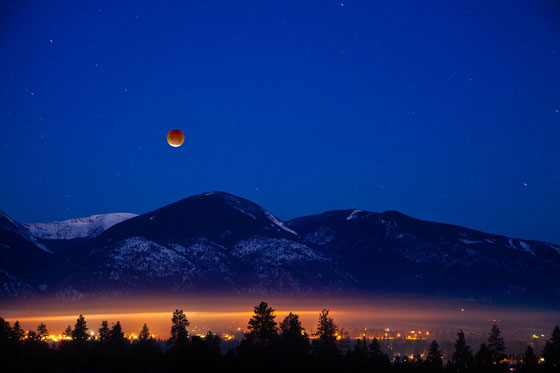
In late September the Moon will undergo a rare total eclipse visible to most people in the Americas, Europe and Africa. This Full Moon will also be known by several names, including the “Blood Moon,” the “Harvest Moon,” and the “Supermoon”!
-
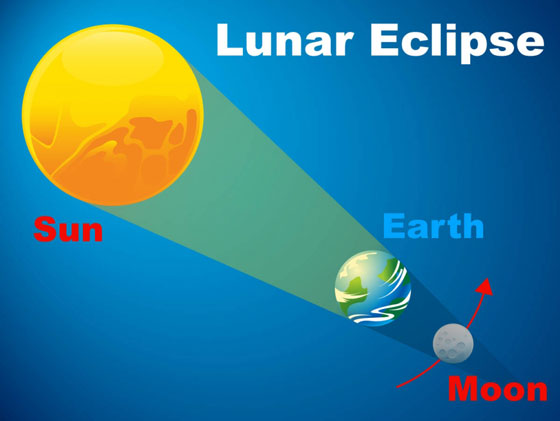
The Moon will pass through the Earth’s shadow on September 27-28, 2015, resulting in a lunar eclipse. On that evening the Moon will be in the Name A Star Live constellation Pisces.
Who Can See the Lunar Eclipse
The following chart shows where the lunar eclipse can be viewed.
-
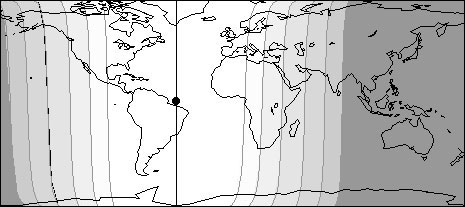
If you are in the white or light-colored area, you can see the eclipse. If you are in the dark-grey area, you cannot see the eclipse. - If you’re in North America or South America, look for the eclipse during the evening hours of September 27.
- If you’re in Europe, Africa or western Asia, you’ll see the eclipse starting sometime after midnight and lasting through sunrise on September 28.
- Your local news media will undoubtedly inform you as to when exactly to look for the eclipse.
- Unfortunately, those of you in eastern Asia, Australia and New Zealand won’t be able to see the eclipse from your location — unless you view it online or on television.
The Blood Moon
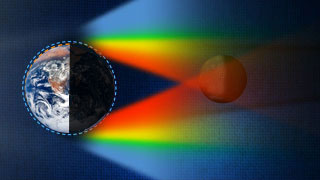
During the eclipse, the Earth’s shadow will gradually creep across the lunar surface. As the Moon grows darker and darker, it will begin to appear reddish/orange. When fully covered by the Earth’s shadow the Moon will be said to be a “Blood Moon.”
The Moon will appear red/orange during the total eclipse because the Earth’s atmosphere acts like a giant prism that refracts (bends) the white light of the Sun. Blue light scatters more readily than the other colors of sunlight. (This, BTW, is why the sky is blue!) The red light is refracted such that it dominates the light we see during a total lunar eclipse.
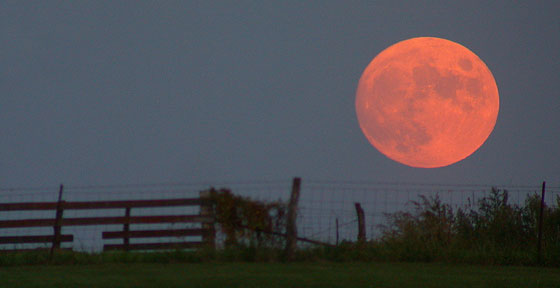
The Harvest Moon
The full Moon nearest the “autumnal equinox” — the date when fall begins in the northern hemisphere — is known as the “Harvest Moon,” because before the advent of artificial lighting farmers relied on the light of the full Moon to work longer hours in their fields harvesting crops. The autumnal equinox will occur on September 23.
The Supermoon
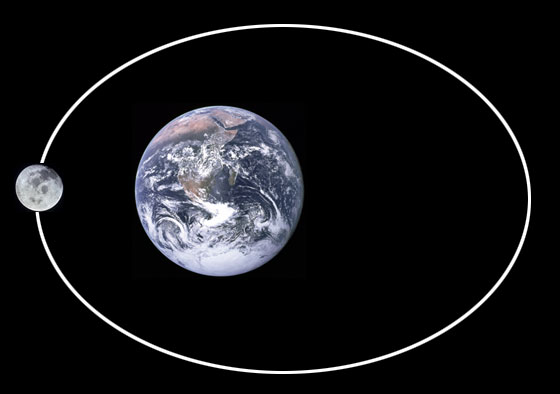
The Moon revolves around the Earth in an oval-shaped orbit. Full Moon can occur at various points in this orbit. Sometimes we see a Full Moon when the Moon is nearest to us (as in the diagram above). The Moon thus appears larger to us than it otherwise does, hence the name “Supermoon.”
The Moon reaches its closest approach to Earth at 9:46 pm EDT (1:46 am GMT) September 27, and Full Moon occurs slightly over an hour later — at 10:50 pm EDT (2:50 pm GMT).
So now you see why the Full Moon of September 27 will also be referred to as the Blood Moon, the Harvest Moon and the Supermoon.
Use the Moon to Find Your Star’s Constellation
Did you know you can use the Moon to help identify constellations (areas of the night sky) like Aries, Taurus and Sagittarius? Follow us on Twitter where we Tweet what constellation the Moon is in each night. (Note that during certain times of the month, the Moon will not appear during the night hours, and so we do not Tweet info about the Moon at those times of the month.)
Finding your star in the night sky
Stars are located within constellations, which are just areas of the night sky. Scorpius, Aries and Taurus are examples of constellations. Your Name A Star Live Star Certificate displays the name of your constellation. You can use our online World Constellation Guide to determine if you can see your constellation during the evening hours (between sunset and midnight). Of course, you’ll need a telescope to see your star. But you can see your constellation without the use of a telescope. You can also find your constellation by using our Virtual Planetarium™ astronomy software. A planisphere is another useful device.